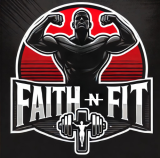Strengthen your posterior chain and prevent injury with these seven lower back workouts using weights—so you can lift heavier, move better, and stay pain-free starting now. Your lower back is the foundation of your strength. Whether you’re deadlifting, squatting, or carrying groceries, your spinal erectors, glutes, and core stabilizers do the heavy lifting. Yet most lifters don’t train them directly—until they feel pain or get injured.
The solution? Add targeted lower back workouts with weights to your program to build endurance, power, and posture. These seven moves are proven to deliver.
Why Train the Lower Back with Weights?
Bodyweight movements like bird dogs and supermans are a great start, but to build real muscle and resilience, you need progressive overload—the foundation of hypertrophy and strength.
With weighted training, you get:
- More tension = more growth
- Better posture and spinal alignment
- Stronger core for big lifts
- Protection from fatigue-related breakdown
🧠 Math Insight: The lower back supports most compound lifts, meaning every pound added to your squat or deadlift also loads your spine. You must prepare for it.
1. Barbell Romanian Deadlifts (RDLs)
Primary muscles: Erector spinae, glutes, hamstrings
A posterior-chain powerhouse, RDLs apply controlled tension to your lower back and teach you to hinge properly.
How to perform:
- Barbell in front, slight knee bend
- Hinge at the hips while keeping back flat
- Stretch down to mid-shin, squeeze glutes to return
💡 Trainer tip: Focus on a 3-second eccentric phase to increase muscle activation.
2. Barbell Good Mornings
Primary muscles: Spinal erectors, glutes, hamstrings
This movement emphasizes hip hinge and spinal control under load.
How to perform:
- Bar on upper back (like a back squat)
- Soft knees, hinge forward at hips
- Keep spine neutral, glutes tight
- Return with glute contraction
⚠️ Start light—form breakdown = back strain.
3. Weighted Back Extensions (Roman Chair or Machine)
Primary muscles: Erector spinae, gluteus maximus
This isolates the lower back and allows direct progressive overload.
How to perform:
- Set up on back extension bench
- Hold a plate or dumbbell at chest
- Extend your back slowly and squeeze glutes at the top
🏆 Pro tip: Focus on high reps (12–15) for endurance.
4. Trap Bar Deadlifts
Primary muscles: Entire posterior chain
Easier on the spine than conventional deadlifts, this variation shifts the load center closer to your body.
How to perform:
- Stand inside the trap bar
- Keep chest tall, back flat
- Drive through heels and glutes
🧮 Math bonus: More power, less shear force = safer for lower back gains.
5. Dumbbell Suitcase Deadlifts
Primary muscles: Obliques, erectors, QL (quadratus lumborum)
This single-sided lift trains anti-lateral flexion, which reinforces core and spine stability.
How to perform:
- Dumbbell in one hand, hinge like a deadlift
- Stand tall without leaning or twisting
🧠 Application: This builds real-world strength for activities like carrying groceries, tools, or luggage.
6. Kettlebell Swings
Primary muscles: Glutes, hamstrings, lower back stabilizers
This ballistic move builds explosive hip power and dynamic lower back control.
How to perform:
- Hold kettlebell with both hands
- Hinge and swing using hips—not arms
- Keep spine neutral, chest open
🚀 Use for: High-rep conditioning or warm-up activation.
7. Front-Loaded Yoke Carries (Farmer’s Walk Variation)
Primary muscles: Core, spinal erectors, glutes
By holding weight in front (sandbag, dumbbell, or yoke), your lower back works overtime to stay upright.
How to perform:
- Grab heavy object and carry at chest level
- Walk slowly, brace core, avoid leaning
📏 Bonus tip: Try walking for time (30–60 seconds) rather than distance.
How to Add These to Your Program
To avoid overtraining your lower back:
- Train it 2x per week
- Rotate between heavy and light sessions
- Pair with glute and core work for balance
📅 Sample Weekly Split:
- Day 1: RDLs + Good Mornings
- Day 4: Weighted Extensions + Suitcase Deadlifts
Aim for 3–4 sets per movement, rep range 8–15 based on load and tempo.
Key Takeaway
A stronger lower back leads to safer, stronger lifts.
Use these lower back workouts with weights to build support where it matters most. You’ll lift heavier, move with better control, and significantly reduce your injury risk. Start this week with 1–2 of these moves and track how much more solid your training feels.
Subscribe now and get a 14-day free trial workout app for iPhone users.



